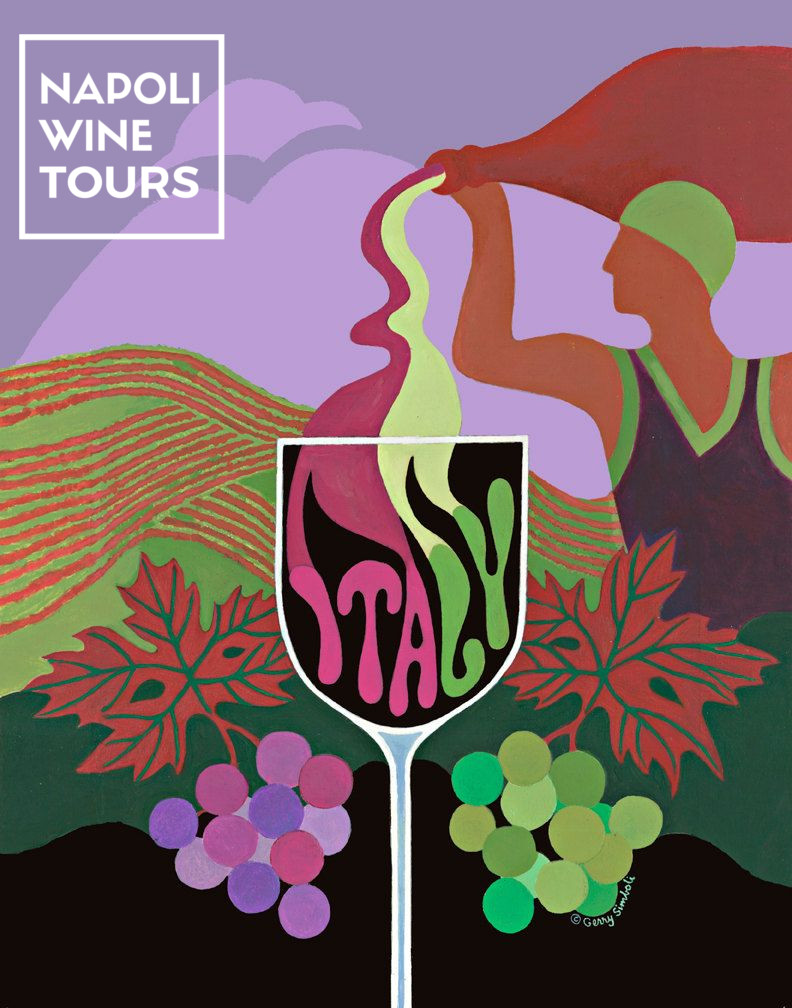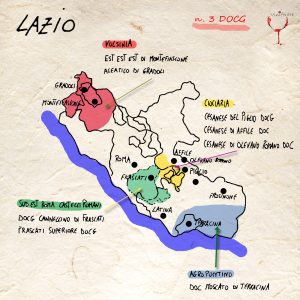
Italy in the glass
We are sure that those who have the habit of reading our articles, by now have understood that the goal of Napoli Wine Tours is to transmit and spread culture, knowledge and the pleasure of drinking wine. To this end, we decided to expand our format, introducing a new virtual tour in our proposal for “wine experiences”: Italy in the glass. Italy and its regions offer a multitude of stories, tales, native vines and wines with their IGP, DOP, DOC and DOCG. Today we have chosen a region to give you a hint of what will be the tour “Italy in a glass ”that is a presentation of the region with the historical notes related to enology and viticulture, an introduction to the native and non-vinified vines in the area, the tasting of wines selected by our sommeliers that best represent the regional identity.
The Lazio region
The Lazio territory has a composite surface, made up of a mosaic of areas which, while keeping their identity alive, have in common the vocation for quality viticulture. The territory is mainly hilly, with a large number of lakes of volcanic origin and a coastal development of 300 kilometers. This mix gives rise to many types of wine. In Lazio, the spread of the vine dates back at least to the Etruscans, who we know for sure cultivated it in the Viterbo area. During the Roman Empire there was a strong increase in plants and a real boom in wine consumption. The territory of the Castelli Romani with its hills of volcanic origin becomes an ideal place for the cultivation of the vine; the wine produced, however, was the result of a rudimentary cultivation and vinification with mainly poor quality results. The Romans did not drink “pure” wine called merum but almost always mixed with water, spices or honey (wine called correct or “seasoned”), considering it an intemperance to drink “absolute” wine, since it was intended only for libations to the Gods. It was also strictly forbidden for women to drink it, the same prohibition applied to young people up to 21 years of age. It will be necessary to wait until the Early Middle Ages for Lazio to develop prestigious viticulture: in the Papal State various Treaties were issued on the subject and particular attention was paid to wine, both as a liturgical element and as an essential part of the table but also for its value. At the end of the 19th century the most famous wines of Lazio, Castelli Romani, Frascati, Marino and Est! East!! Est !!!, were all obtained from native vines such as Malvasia, Trebbiano, Bellone (also called Cacchione). The most renowned wine of Lazio is Frascati.
Looking in more detail at the crops, it turns out that the hilly areas of the region give rise to important wines such as: the red Cesanese del Piglio DOCG and the whites Cannellino di Frascati DOCG and Frascati Superiore DOCG Candida, Malvasia del Lazio (also called Malvasia nostrana or Puntinata), Trebbiano Giallo, Grechetto.
In terms of red grapes, the most important autochthonous vine is considered the Cesanese, at the base of wines of absolute excellence such as the Cesanese del Piglio DOCG, the Cesanese di Olevano Romano DOC, the Cesanese d’Affile DOC and the Castelli Romani DOC. reveal all the secrets of this region, we will tell you the rest …

Anthium, Bellone, IGT, 2019, Casale del Giglio, 14 °
Color: straw yellow
Nose: fruity peach and lychee, herbaceous hints of hay, mineral
Taste: fresh with excellent and pleasant acidity, mineral hints arrive intensely in the retronasal, sufficiently savory.
Without Vandalisms, Cesanese del Piglio, Abbia Nòva, 2017,, 13.5 °
Color: ruby red
Nose: cherry, plum, the tertiary note is well present with vanilla, cloves, chocolate.
Taste: the aromas perceived at the olfactory tests are confirmed in cherry, vanilla, and chocolate. The tannin is well balanced with freshness. Of good persistence.
The team of sommeliers of Naples Wine Tours is waiting for you to discover the whole of Italy. For info write us here
